
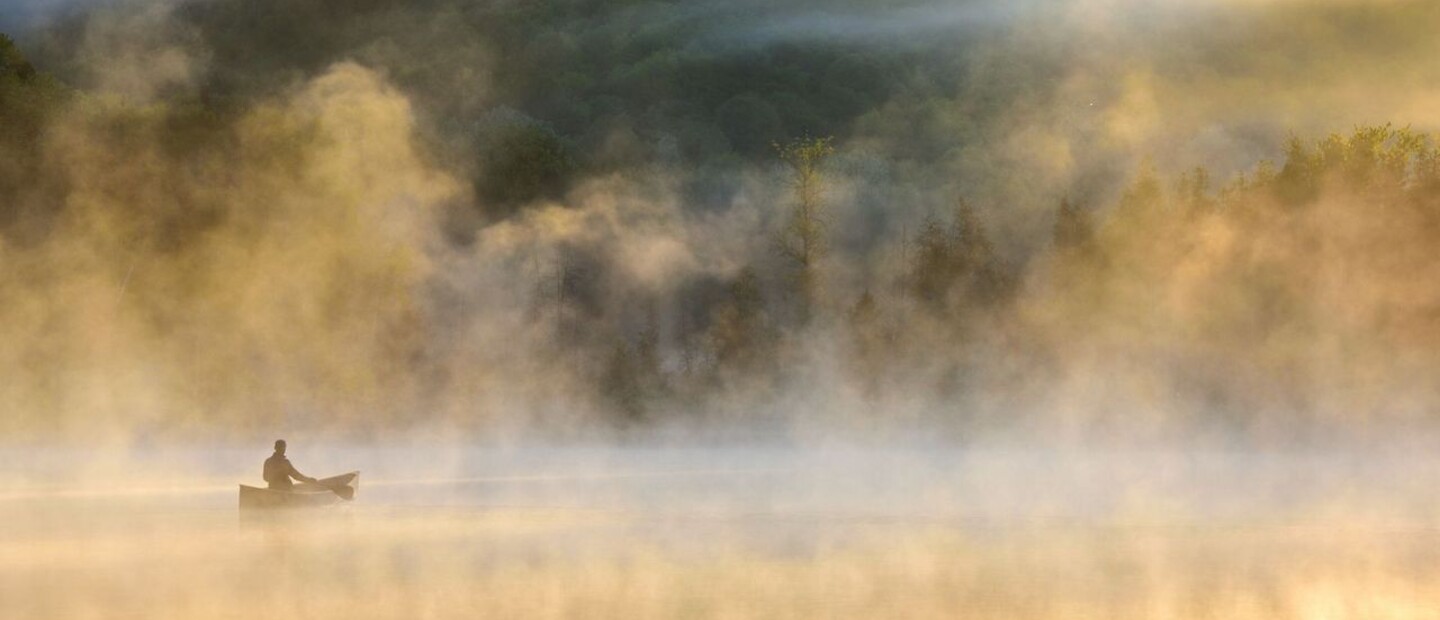
Ontario Ghost Towns You Can Only Reach By Paddle
From logging camps to railway towns, wilderness hermitages and mining outposts, there are countless ghost towns scattered across Ontario. Paddling a canoe or kayak is a great way to explore abandoned communities because it was often the way the original inhabitants arrived, making for a more authentic experience. I’ll never forget the awe of sea kayaking over the flooded mine shafts and crumpled breakwalls at Lake Superior’s Silver Islet, thinking, “I can’t believe people once lived here.” I’ve felt a similar shiver down my spine while paddling past other abandoned historical towns on Ontario canoe routes.
This article offers a primer of Ontario ghost towns you can only reach by canoe or kayak. Remember to travel responsibly: leave what you find and obey private property signs, recognizing that some ghost towns remain home to seasonal residents. Travel softly and bring your sense of wonder, opening your mind to long-lost ways of life.

Silver Islet, Lake Superior
When you glide by in a sea kayak, it’s hard to believe that a tiny, unremarkable islet off of Lake Superior’s Sibley Peninsula, east of Thunder Bay, was once the site of one of the world’s richest silver mines. During its heyday in the 1880s, nearly 500 miners worked at Silver Islet, toiling in shafts 375 m (1,250 feet) below the surface of Lake Superior on a breakwall-enclosed island measuring less than half the size of a hockey rink. Monumental efforts were made to keep the lake’s icy waters from infiltrating the mine site, yet Lake Superior’s relentless waves won in the end, washing away most evidence of operations that extracted millions of dollars worth of silver in barely a decade.
Lake Superior is capricious as ever, making Silver Islet a destination for experienced sea kayakers only. Launch at the public marina at the cottage community of Silver Islet at the end of Highway 587, about an hour’s drive from Thunder Bay. About a kilometre offshore, you can paddle over the mine shafts, gaping from Lake Superior’s clear depths. Silver Islet is part of the Lake Superior National Marine Conservation Area; sign up for guided sea kayak tours to take in this spectacular freshwater jewel with Such A Nice Day Adventures or Naturally Superior Adventures on day trips or multi-day expeditions.
- The drive-in campground at Sleeping Giant Provincial Park’s Marie Louise Lake makes an excellent base camp to explore the area. The park’s visitor centre features a model of the Silver Islet mine. Or book a cabin at Beyond the Giant Nature Retreat for luxe accommodations.
- Be sure to check out Silver Islet’s historic general store, and make the easy hike (or bike ride) to see the Sea Lion, an impressive rock arch on Lake Superior.

French River Village, French River Provincial Park
A busy town near the mouth of the French River had a population of 300 people during the peak of logging in the late 1800s. French River Village was located about 5 km upriver from Georgian Bay, on the river’s Main Channel. Canoeists descending the historic French River and sea kayakers tracing the archipelago at the river’s mouth can still see glimpses of a community that thrived between 1875 and 1922. The remaining foundations and few cemetery stones are a far cry from the original sawmills, post office, churches, hotel and school of the town.
Paddlers have several options to visit the ghost town in French River Provincial Park. Launching from Hartley Bay, just off of Highway 69, canoeists can make a three- to five-day loop through the French’s myriad outlets to Georgian Bay, passing by the old village site on the Main Channel en route. Sea kayakers can use the same launch and tackle one short portage at Dalles Rapids to reach the village. Meanwhile, French River Village is a short side trip for sea kayakers making the weeklong tour from Killarney to Key River—one of Georgian Bay’s best paddling trips. Backcountry camping permits are required for French River Provincial Park.
- Sign up for a guided Georgian Bay sea kayak trip with Black Feather or Ontario Sea Kayak Centre.
- The Lodge at Pine Cove offers exceptional accommodations on the French River for luxury-seeking outdoor enthusiasts.

Jackfish, Lake Superior
Before diesel locomotives made steam-powered engines obsolete, a bustling community on Lake Superior’s north shore was critical to Canada’s national railway. Jackfish was once home to massive coal docks, a school, hotel tavern and ice rink, all of which were suddenly abandoned in the early 1960s. Located about 25 km east of Terrace Bay in the Lake Superior National Marine Conservation Area, Jackfish’s few remaining buildings are accessible to local cottagers by ATV and foot. Paddling into the ghost town by sea kayak is a far more authentic experience: Along the way, you’ll likely hear the nostalgic roar and clatter of a Canadian Pacific freight train passing by.
Jackfish was also a favourite haunt of the Group of Seven landscape painters, including Lawren Harris, who rendered iconic canvases of nearby Pic Island and Neys Provincial Park. Experienced paddlers can launch on Jackfish Lake, located just off the Trans-Canada Highway, and paddle through a tunnel to reach Lake Superior’s Tunnel Bay. The ghost town, most of which was consumed by several destructive fires, is only a few kilometres south along the shore.
- The Coach House Motel on Highway 17 offers classic motel accommodations and easy access to the public launch on Jackfish Lake.
- Sign up for a fully guided, Group of Seven-themed sea kayak expedition and explore Jackfish with Naturally Superior Adventures.
Wendell Beckwith’s Centre of the Universe, Wabakimi Provincial Park
If you love wilderness canoeing as much as I do, it’s easy to appreciate why the eccentric inventor Wendell Beckwith claimed that Whitewater Lake in Wabakimi Provincial Park was the centre of the universe. After earning multiple patents from his inventions in the United States, Beckwith turned his back on society and retreated to remote Best Island on Whitewater Lake in the 1950s to study “pure science.” He handcrafted an impeccably constructed log home, cabin and outbuildings, and became a local legend amongst Indigenous people, tourist operators and canoe trippers before he died in 1980.
Though the main building has fallen into ruin, it’s still possible to see Beckwith’s ingenuity in the Snail, a small, once-cozy circular cabin that’s built into a hillside. Wabakimi is one of Ontario’s largest and most remote wilderness parks, made up of countless lakes and endless boreal forest that’s still home to endangered woodland caribou. For me, getting to Best Island is the best part of all. Wabakimi Provincial Park abounds with canoe routes. The simplest option is to launch at Little Caribou Lake, near the town of Armstrong, and spend 10 days paddling to and from Whitewater Lake, on a teardrop-shaped loop including Smoothrock Lake and the Berg River. You can also charter a floatplane with Mattice Lake Outfitters to fly with your canoe to Whitewater Lake.
- Wabakimi Outfitters is your go-to source for canoe rentals, shuttles and outfitting in Wabakimi Provincial Park. Founder Bruce Hyer can share a wealth of route-planning knowledge to make the most of your adventure, and the company operates a comfortable eco-lodge just outside of Armstrong, on Highway 527.
- Looking for an upscale experience at a wilderness lodge? Wilderness North operates an all-inclusive fly-in lodge on Whitewater Lake, which makes a great base to visit the Beckwith cabins.

Borasso Logging Camp and Peterbell Station, Missinaibi Provincial Park
After serving as a watery highway for Indigenous paddlers and later the fur-trading voyageurs, Missinaibi Provincial Park morphed into an epicentre of logging in northern Ontario. Adventurous paddlers can see the remains of a logging camp on Missinaibi Lake and take in the former mill at Peterbell Station, on the Missinaibi River.
Hidden in remote Baltic Bay, the Borasso logging camp provides a glimpse of the not-so-distant past. It’s a two-day, 35-km (one-way) paddle by canoe or sea kayak from the park’s Barclay Bay campground and a 3-km hike to reach the Borasso camp, which was active in the 1950s. It was all part of labourious, year-round efforts to cut timber, haul it to the Missinaibi River in the winter, and then float it downriver in the spring. There’s lots left to explore around the old mill at Peterbell Station, on the CN Railway, three days downriver from Missinaibi Lake. It’s possible to end your trip with a train ride (with your canoe and gear) back to civilization aboard VIA Rail, though most paddlers continue for another week of wilderness whitewater canoeing to the town of Mattice on Highway 11. Backcountry camping permits are required.
- Sign up for a guided Missinaibi River canoe trip with MHO Adventures.
- Missinaibi Outfitters offers canoe rentals and vehicle shuttles for paddlers planning DIY trips on the Missinaibi River.
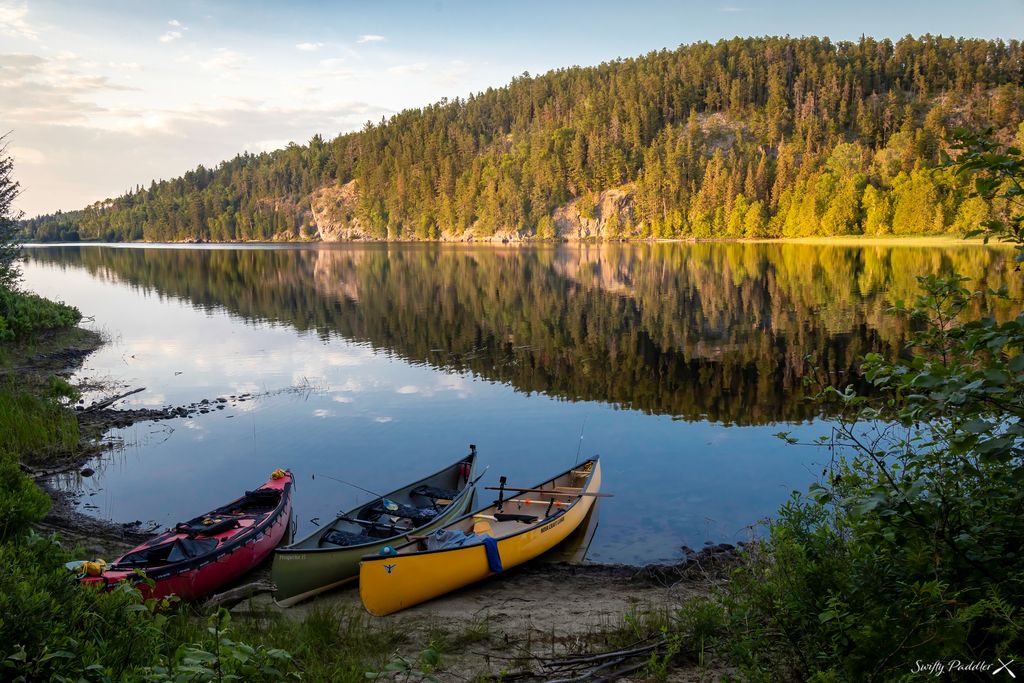
Sheahan, Spanish River Provincial Park
The ghost town on the Spanish River goes by two names: Sheahan and Pogamasing, referring to the old CP railway community and the greater network of backwoods logging villages, respectively. The latter is taken from the Indigenous place name for this spot, which is located about midway along the popular five- to seven-day Spanish River canoe route, meaning “where water flows over gravel.” It’s an apt moniker for one of Ontario’s best wilderness whitewater canoe trips.
You have two options to get there: Novice to intermediate whitewater canoe trippers usually start the trip at Duke Lake, located off of Highway 144 north of Sudbury; more experienced paddlers can take the VIA Rail Budd Car from Sudbury to the town of Biscotasing to access the Spanish’s west branch. Both options finish at Agnew Lake, north of the town of Webbwood on Highway 17. Either way, you need a backcountry camping permit for Spanish River Provincial Park. Get a full primer on paddling the Spanish River, including more route options, here.
Sheahan is reflective of countless once-thriving communities along the railways of Northern Ontario. Sheahan is a siding on the CP railway, a blink-and-you-miss it type of place nestled between the river and VIA Rail Budd Car from Sudbury. It was once part of a larger network of logging outposts revolving around Pogamasing Lake, a sizable body of water west of the Spanish that’s reached by an 800-m portage and a worthy side trip for river paddlers. From the late 1800s through the Depression, “Pog” was home to hundreds of loggers who worked long hours in Northern Ontario’s bush. Fortunately, the loggers left many of the big trees; besides offering novice-friendly whitewater canoeing throughout most of the summer, Spanish River Provincial Park protects some of Ontario’s best remaining examples of old-growth pine forest.
- Contact Spanish River Outfitters or Agnew Lake Lodge for shuttles and canoe rentals. Both offer cabins to rent before or after your trip.
- Guided Spanish River canoe trips are available from Black Feather and MHO Adventures.
White Otter Castle, Turtle River Provincial Park
When you visit the White Otter Castle, you can’t help but feel for Jimmy McOuat, the hard-luck northwestern Ontario hermit who built an impressive log home on a remote wilderness lake after he was dumped by a mail-order bride for living in a shack. Located north of the town of Atikokan, the three-storey White Otter Castle has stood for over a century, constructed single-handedly from dovetailed red pine logs harvested in the area. McOuat was 60 years old when he finally completed the castle in 1915, only to drown three years later.
The White Otter Castle is a highlight of a five- to seven-day canoe trip from Ignace to Mine Centre, off of Highway 17 in Turtle River Provincial Park, perfect for intermediate paddlers. The route includes a mix of river and lake travel with 27 portages. Launching from Brown’s Clearwater West Lodge, located on Highway 622, makes for an out-and-back canoe route you can tackle in a weekend.
- Located on the doorstep of Quetico Provincial Park, Atikokan is known as Canada’s canoe capital for good reason. For canoe rentals, vehicle shuttles and outfitting for the area check out Voyageur Wilderness Programme, Quetico Outfitters and Seine River Lodge.
- Brown’s Clearwater West Lodge offers guided tours of White Otter Lake and the White Otter Castle, as well as waterfront accommodation.
Recommended Articles

Best Fly-in Canoe Trips

Best Canoe Maps in Ontario

Best Lakes for Paddling

Must-Visit Lakes in Quetico
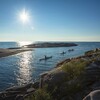
So Many Places to Paddle

Canoe Trips in Lady Evelyn-Smoothwater

Best Places To Canoe Trip

11 Indigenous-Owned Outdoor Adventure Companies in Ontario
Train-In Adventure

Reel to Real

Hike-in or Paddle-in campsites only

Canoe on Georgian Bay
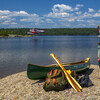
Temagami Canoe Trip Guide
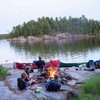
Best Sites on the French River

remote Island getaways

Find Wilderness South of Algonquin
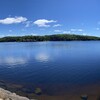
Woodland Caribou Canoe Trip
7 photography tips











